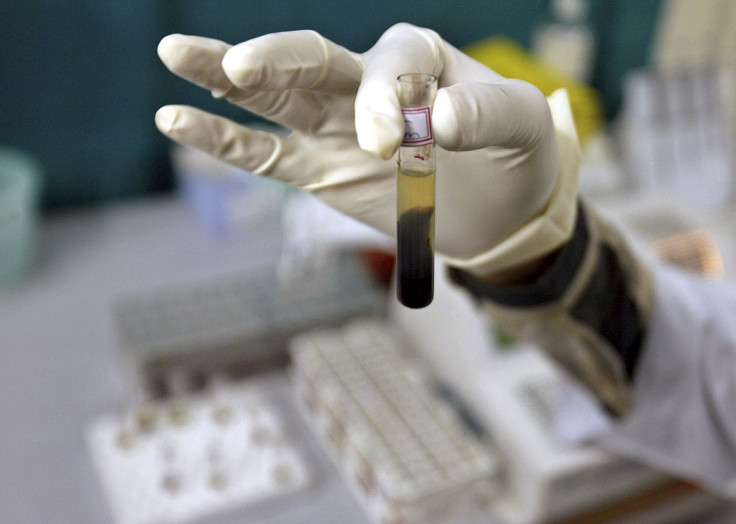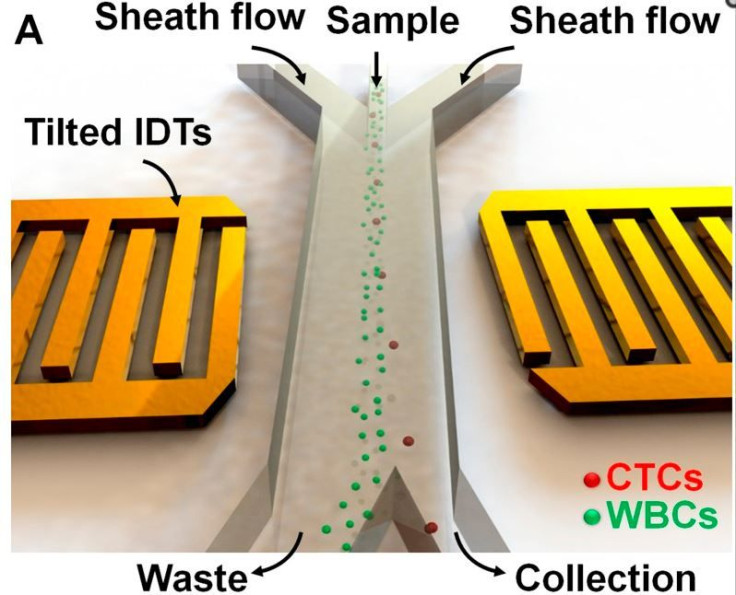Sonic Tweezers Isolate, Without Contact, Cancer Cells Circulating In The Blood

Using sound waves, a team of bioengineers say they can efficiently isolate, without physical contact or harm, tumor cells circulating in the blood. This no-contact method guarantees the cell’s original characteristics will be maintained and so benefits cancer research. It also might lead to a more precise monitoring of a cancer patient’s response to treatment.
A simple blood test can detect circulating tumor cells (CTCs) and so provide a minimally invasive way for doctors to manage cancer treatment. The current techniques either damage or alter the characteristics of CTCs and so they may no longer faithfully represent the parent tumor. To address this problem, Dr. Tony Jun Huang, a professor in the department of engineering science and mechanics at Pennsylvania State University, and his colleagues at MIT, Notre Dame University, and Carnegie Mellon University, developed an innovative cell-separation device based on acoustics.
According to Dr. Richard Conroy, of the National Institute of Biomedical Imaging and Bioengineering, the method is akin to a sonic "tweezer."

“These tweezers can move and manipulate thousands of cells without touching them, preserving their characteristics,” said Conroy in a press release.
Essentially, the new method uses acoustic waves, similar to those in an ultrasound test. While streaming a blood sample across a microfluidic chip, a fraction of a second of acoustic waves will separate the blood cells from the CTCs. This sorting process works because of the significant difference in size and weight among different cell types. Unlike other sorting methods, the very brief acoustic exposure exerts little to no stress on the cells and so maximizes the potential of CTCs remaining intact — in their native state — for later analysis.
To fine tune the technology, Huang and his colleagues combined a mixture of cultured cancer cells and white blood cells. After some experimentation, they defined which parameters, including blood flow rates and acoustic wavelengths, that would result in the most rapid and efficient separation of cells. The newly optimized parameters resulted in a 20-fold increase in efficiency, such that the technology was able to recover 83 percent of the total cancer cells. Next, the group tested the technology on blood samples from three breast cancer patients.
“The current throughput is still far from ideal, but it enables us to test the clinical utility of acoustic-based separation,” Huang said. Nevertheless, his new method, which is performed by an inexpensive and compact device, has many advantages, including biocompatibility and leaving the original properties of the cancer cells intact.
“Development of tools like this will have a significant number of applications in both the research lab and the clinic,” Conroy said.
Source: Li P, Mao Z, Peng Z, et al. Acoustic separation of circulating tumor cells. Proc. Natl. Acad Sci. 2015.



























